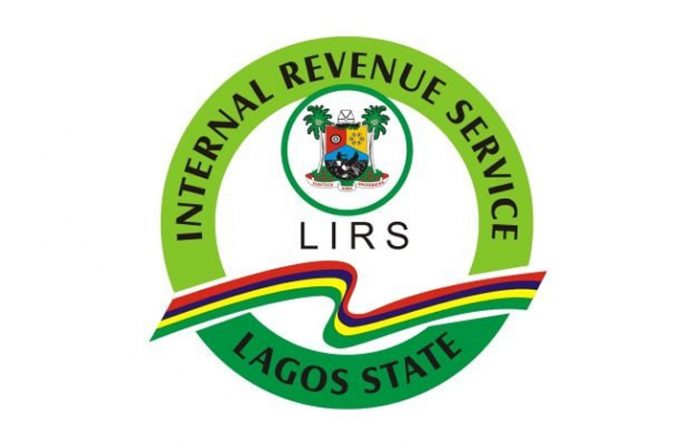February 24, 2020/United Capital Report
Earlier, the National Bureau of Statistics (NBS) published Nigeria’s Q4-19 GDP numbers. According to the report, real GDP expanded by 2.55% y/y, faster than revised figures of 2.28% y/y and 2.38% y/y for Q3-2019 and Q4-2018 respectively. Notably, this outperformed consensus expectation and delivered the highest quarterly growth since Q3-2015. Accordingly, output growth in the Nigerian economy settled at 2.27% in FY-2019, marginally beating our estimate of 2.23%. Notably, the acceleration was driven by the continued expansion in the Oil, Agriculture, Information & Communication, Manufacturing sectors among others. Meanwhile, Trade which contributes c. 16.0% to GDP remained contractionary for the third successive quarter, down 0.58%y/y (vs. -1.45% in Q3-2019 and 1.02% in Q4-2018).
Oil GDP: Nigeria maintains an above 2.0mb/d production level through 2019
The Oil sector remained on the path of expansion, growing by 6.36% y/y in Q4-2019. This was an improvement relative to Q4-2018’s -1.62% y/y but slowed compared to Q3-2019 (6.49% y/y). Notably, the y/y growth was fueled by an increase in oil production (2.00mb/d in Q4-2019 vs 1.91mb/d in Q4-2018), following lower cases of supply disruptions, greater production uptime and the takeoff of Total’s Egina project in early 2019. However, comparing Q4-2019’s production to Q3-2019, production slowed from 2.04mb/d to 2.00mb/d as Nigeria was reported to have adhered strictly to its supply cut quota by OPEC+ during the quarter.
In terms of contribution to overall GDP, the oil sector contribution remained relatively marginal at 7.32%, (an improvement when compared to Q4-2018’s 7.06% but a decline relative to Q3-2019’s 9.77%). Finally, the effect of lower crude oil prices which averaged $62.4/b in Q4-2019 (vs $68.6/b in Q4-2018) was outweighed by the increase in production, causing a growth of 10.6% y/y in nominal oil GDP.
Non-oil Sector: A broad-based improvement
Non-oil real GDP grew by 2.26% y/y in Q4-2019, an improvement from 1.85% in Q3-2019 albeit lower in comparison to 2.70% in Q4-2018. Specifically, the Agriculture sector grew by 2.31% (vs 2.28% in Q3-19 and 2.46% in Q4-18) and Services sector grew by 2.60% in Q4-2019 (vs 1.87% in Q3-2019 and 2.90% in Q4-2018).
Overall, the performance for the Non-oil sector was slightly better in FY-2019, up 2.06% vs 2.0% in FY-2018. Also, the contribution of the Non-oil sector to GDP came in at 91.22% in 2019 vs 91.41% in 2018.
Agriculture: A better year for crop production and fishing
The Agriculture sector GDP grew 2.31% y/y in Q4-2019, slightly better than Q3-2019 growth of 2.28% y/y but slower compared to Q4-2018’s growth of 2.46%. Dissecting the components of the sector, Crop production sub-sector which contributes c. 90.0% of the sector’s GDP spurred the overall growth with an uptick of 2.52% in Q4-2019 (better performance when compared to the growth of 2.41% in Q3-2019 and 2.48% in Q4-2018). Similarly, the Forestry sub-sector grew by 2.33% (vs 1.68% in Q3-2019 and 1.97 in Q4-2018). Surprisingly, growth in forestry came in at 1.26% in Q4-2019 (vs 3.78% in Q3-2019 and 1.74% in Q4-2018). On the other hand, Livestock sub-sector contracted by 0.20% (vs 0.02% in Q3-19 and 2.35% in Q4-18). Overall, the Agric sector output rose by 2.36% y/y in FY-2019, faster than 2.12% in FY-2018.
Manufacturing sector growth expands by to 1.24%
In line with Manufacturing PMI estimates for Q4-2019, the Manufacturing GDP expanded by 1.24% y/y, higher when compared to Q3-2019’s 1.10% growth and lower than Q4-2018’s 2.35%. Notably, the uptick in manufacturing GDP was driven by growth in the Plastic and Rubber products (+3.08% y/y) and Food, Beverage & Tobacco (+2.69% y/y). However, major drags to growth came from Oil Refining (-25.71% y/y) as well as Motor vehicles & Assembly (-2.13% y/y). In summary, the stronger upticks recorded in the 10 of 13 subsectors of the Manufacturing GDP buoyed the aggregate output. In terms of contribution to overall GDP, the Manufacturing sector contributed 8.74% to GDP (same as Q3-2019 but lower than 8.86% recorded in Q4-2018).
FY-2020 Outlook: Another year of sub-optimal growth?
Updating our GDP model with the latest numbers as well as factoring the recent CBN’s pro-growth policy drive, we expect the momentum in the Nigerian economy to improve relative to FY-2019, but remain at a sub-optimal level of 2.36% y/y in FY-2020 – below population growth of 2.6%.
Our view is that the CBN’s unorthodox monetary policies will keep cost of capital low through 2020 and encourage domestic borrowings as well as investment by local corporates for expansion purposes. However, we believe faster GDP growth is unlikely in the near term, given the ongoing necessary but conflicting fiscal policy actions (e.g. the recent move to increase VAT, possible hike in electricity tariffs) may hurt consumption. Also, the continued closure of the land borders may hurt aggregate demand as a result of increased prices but has a positive effect on local production. In addition, subsisting concerns around policy unpredictability which has been one of the biggest impediments to FDI flows and investment generally, as well as the reluctance to implement reforms that will spur private sector growth is worrisome. A tepid outlook for crude oil prices amid demand shortages and the likelihood of a deeper supply cut in Mar-2020 suggest a negative impact on the broader growth number. Finally, the time span required to fix power and other critical infrastructure that will ease the cost of doing business and other structural impediments is a factor that may subdue growth in the interim.
Please Click Here for the full NBS report.














